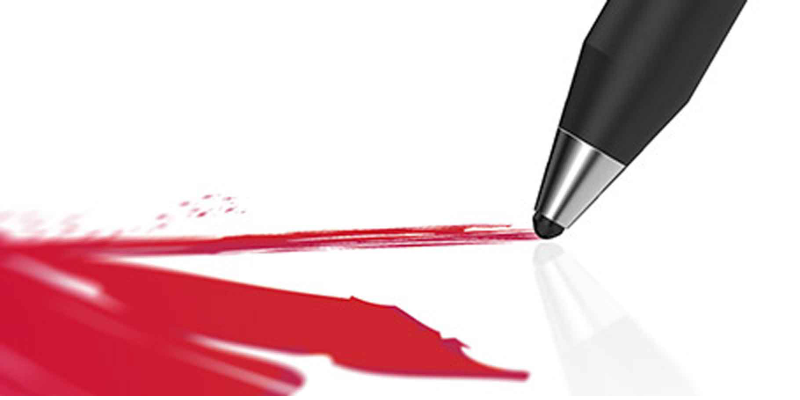For these stylus pens, we asked an artist to do a guest review. Travis Hanson is an Eisner-nominated fantasy illustrator with a huge imagination. His works include comics, children’s art, fantasy, and just fun illustrations that encourage the need for people to be creative. For more information on Harris’s works, rates and ideas, check out his site.
As an illustrator that works both digitally and traditionally, I occasionally get to work and review new products and equipment. Some of these products are designed rather well and have even become staples in my inventory. While other times, some of these products miss the mark. Today, I’m looking at two different stylus pens from the same company. The Jot Script (a pall point stylus) and the Jot Touch (a fat head stylus for sketching). I was asked to look at them from an artist’s point of view. Would they work for on-the-fly sketching on an iPad? Would they be beneficial to an artist? This is a tough question to answer, because I haven’t found a stylus for the iPad or other tablet that feels comfortable and works smoothly when sketching.

The Script and the Touch seem to be made for note-taking more than free-hand sketching. Both come with a paper that recommends the apps that the manufacture wants you to use. This is frustrating to me because, there are several programs I already use for sketching and to have to add one more set of apps to the mix doesn’t excite me.
The pens themselves are clunky and heavy. While the Script uses a battery, the Touch needs to be charged. The Touch has a cool charging station that comes along with it though, which is a USB docking station that the pen rests on through a magnet. It charges quickly.
When I received the pens, I decided to try them out how I would actually use them. I tested them on two road trips, using them in situations that I normally use them for and then a few that were unique to me.
Using the Script for general note-taking, I find that it does indeed take notes. The problem with both pens is they’re not fluid and don’t lend to my style of note-taking. It’s also hard to read at times, which is frustrating because I take pride in how neat and clear my writing is. The Touch was no better. The pens simply don’t move fluid enough when writing. It’s easier to tap out my text.
Switching to sketch work, I find the same issues as when I tried to write. It’s quite frustrating as I felt that my sketching didn’t look natural. I have only found one stylus that allows my sketching to feel natural, but that one was built with a specific tablet in mind. The lines made from these pens aren’t as clean and it feels like the pens are trying to create a thick-thin line on their own. As an artist, this makes the pens an unacceptable tool.
Editor’s note: So unsatisfied was Travis Harris with the Jot styli that there were no illustrations he felt were worth saving for the article. That’s quite the condemnation.
For what I do, these pens don’t meet the mark. They look cool and could have potential, but they’re not built for the digital artist in mind, especially one that sketches. The pens are heavy and a little bulky, and they don’t leave the clean line work that my current stylus does. If you’re a quick note taker and want the feel of a stylus in your hand, these stylus might work for you. The charger is nice, but I’m not sure on the battery life. My greatest fear is not having access to a USB port to recharge the Touch. A nice charger isn’t a good enough reason to recommend a stylus though.
Would I recommend the Jot pens? To an artist, no. Here’s a tip to any other companies looking to build a stylus for digital sketching and designing: You might want to have a few artist help in the functionality of the design process.


Comments are closed.